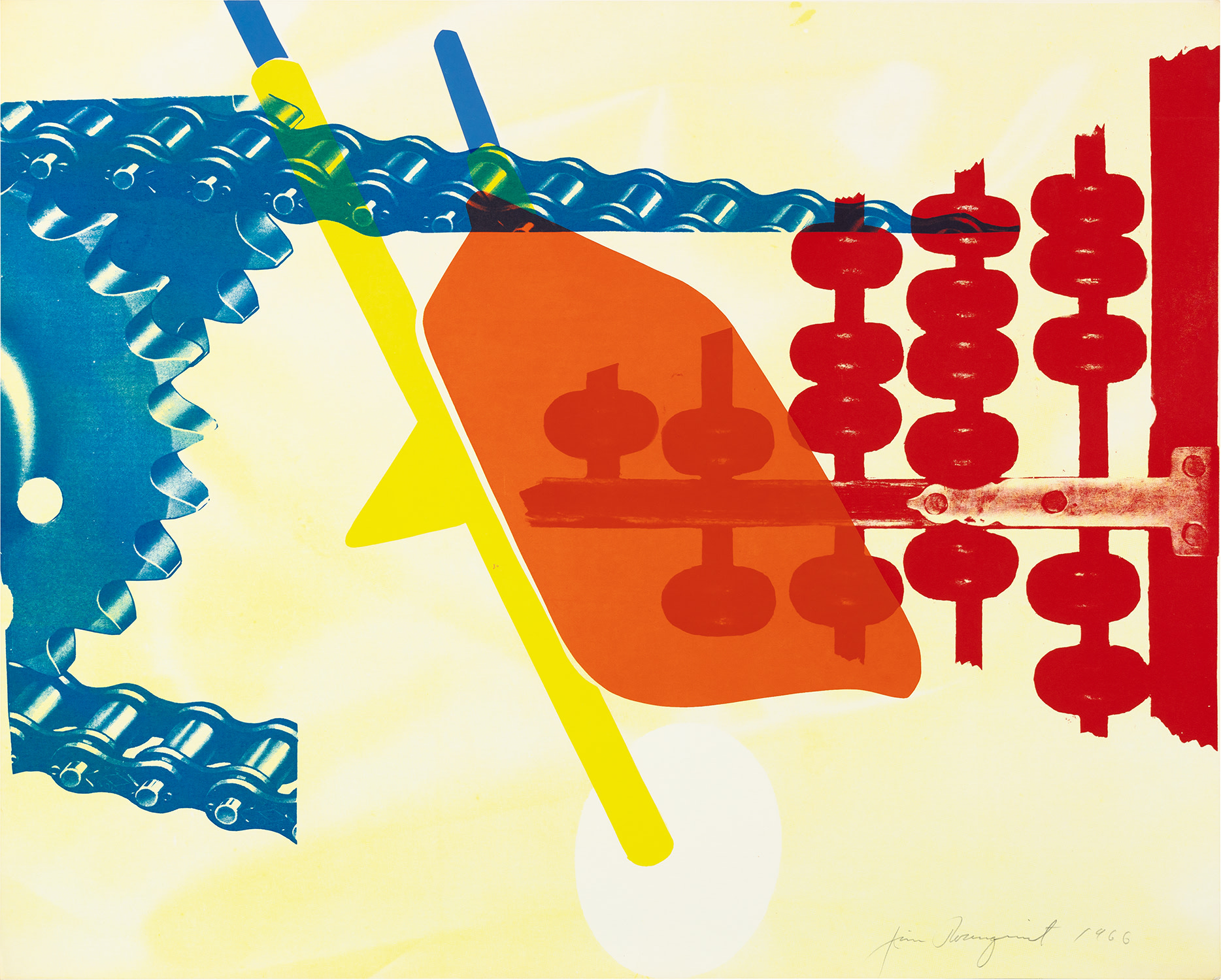

201
James Rosenquist
Whipped Butter for Eugene Ruchin, from 11 Pop Artists, Volume II (G. 11)
1965
Screenprint in colors, on Italia handmade Beckett paper, the full sheet.
S. 24 x 29 7/8 in. (61 x 75.9 cm)
Signed and dated in pencil (presumably a proof, aside from the edition of 200 and 50 artist's proofs in Roman numerals), published by Original Editions, New York, unframed.